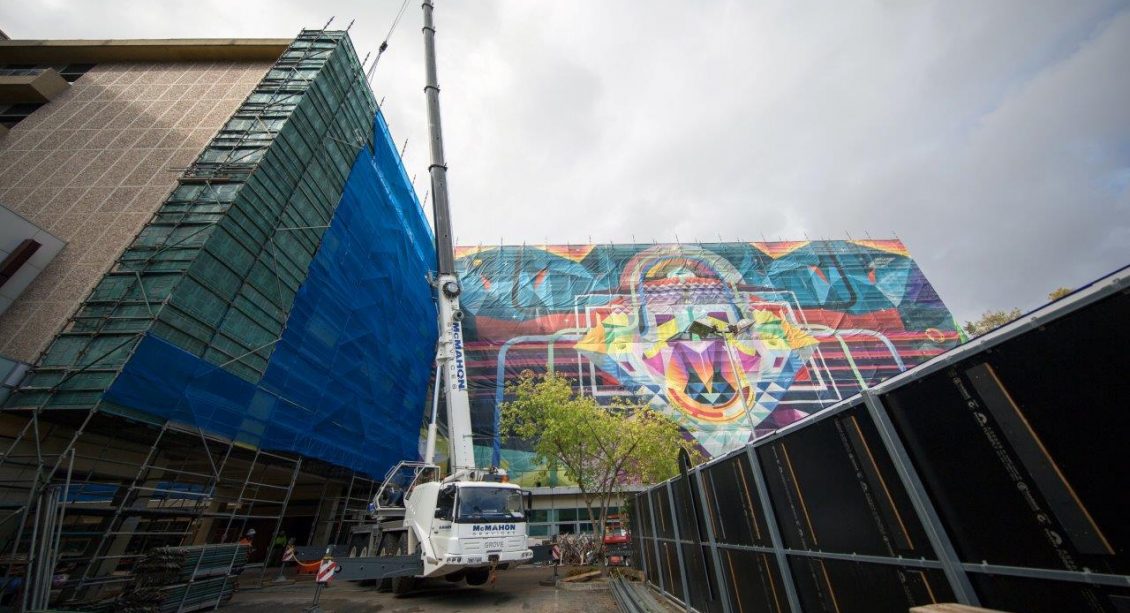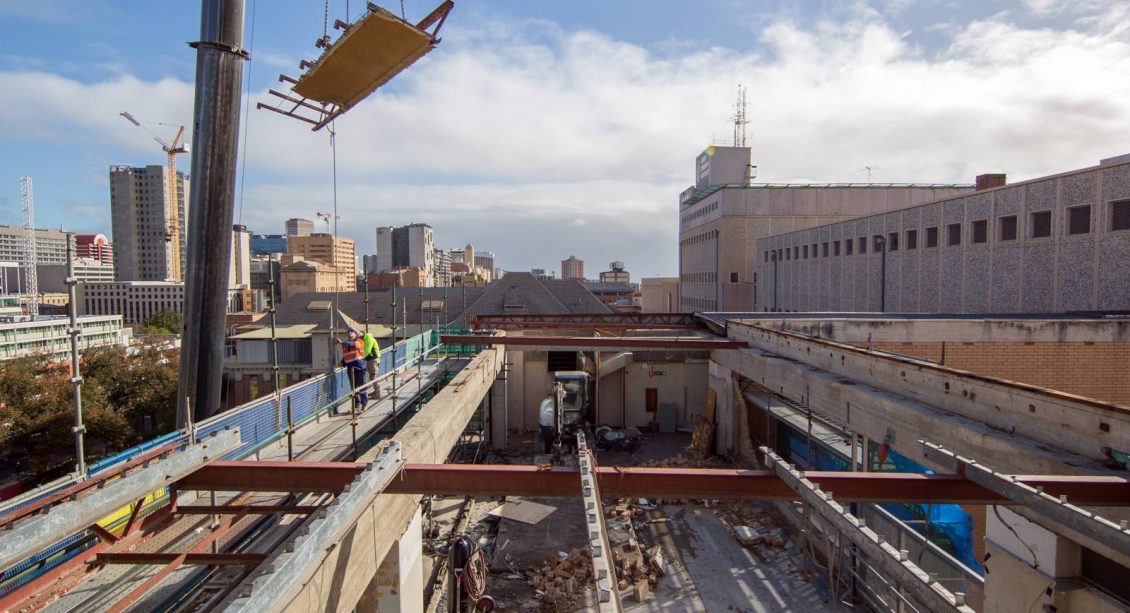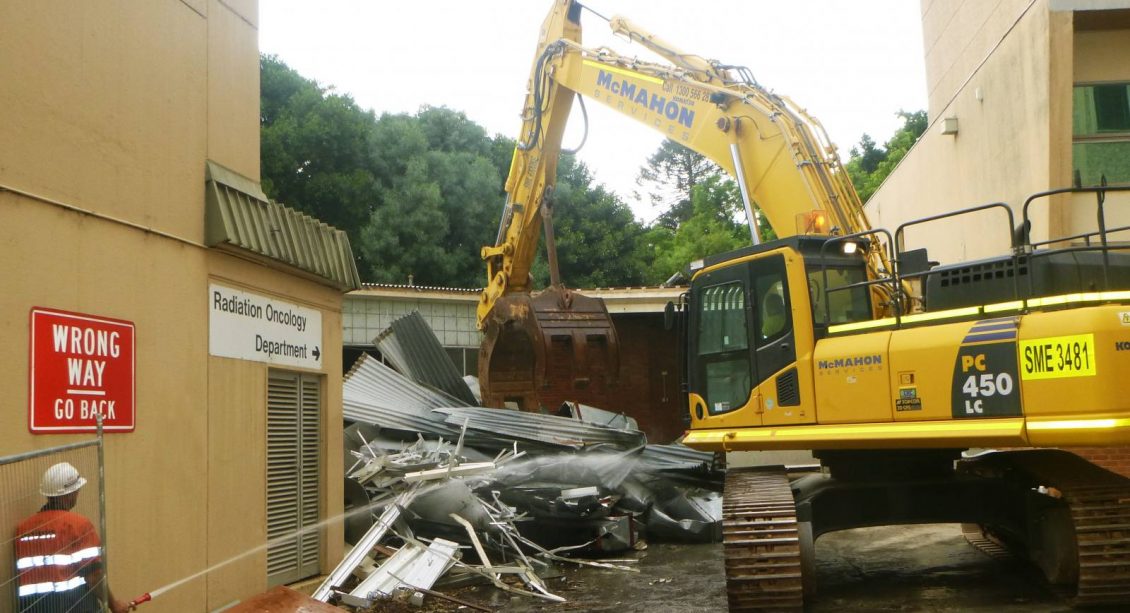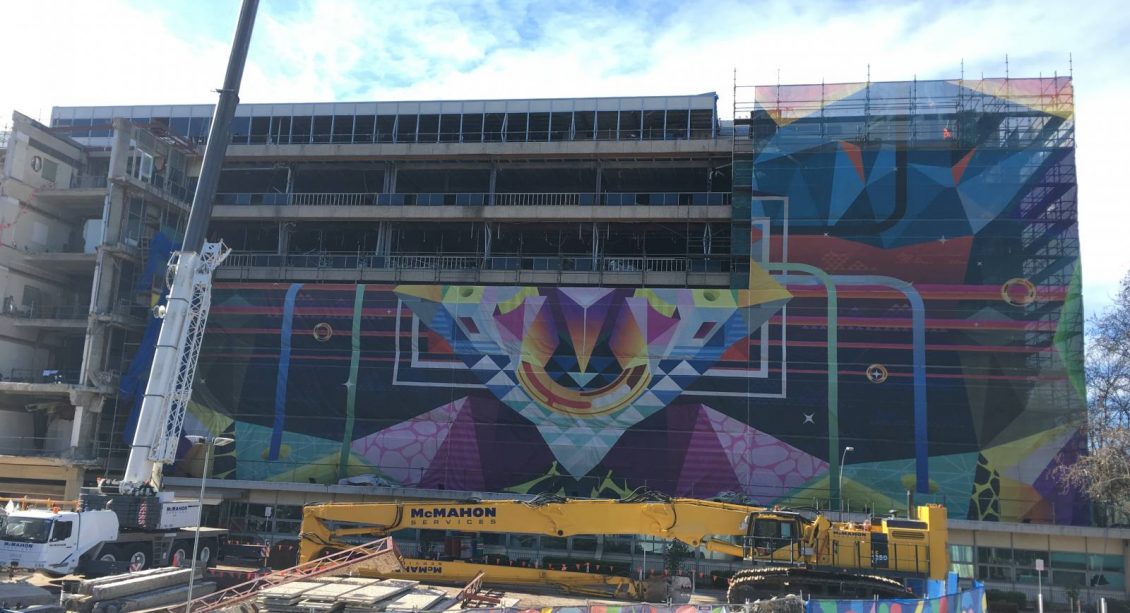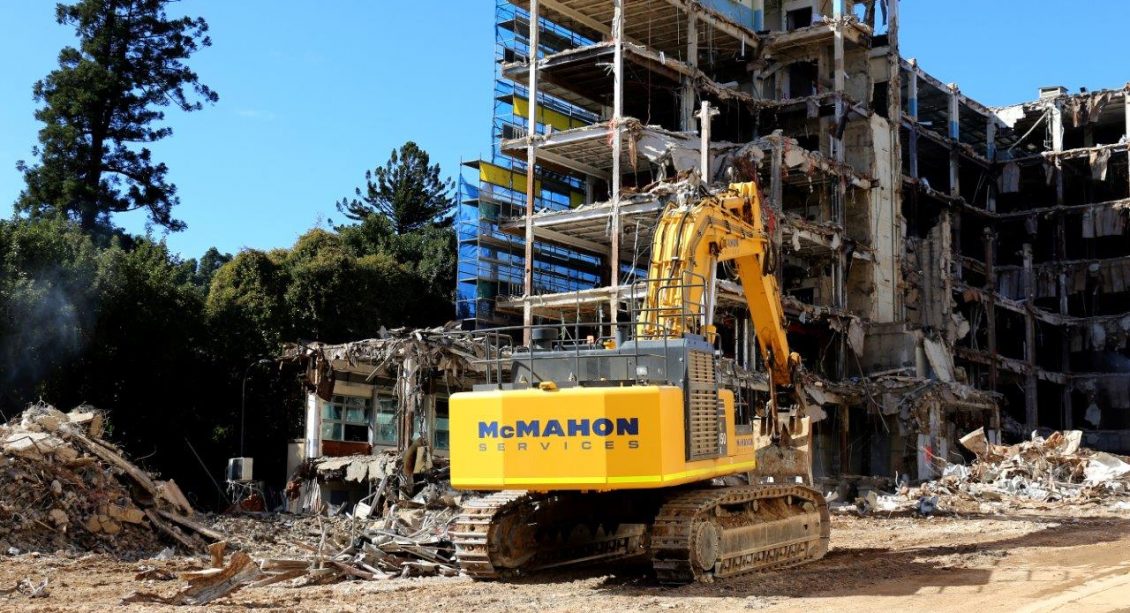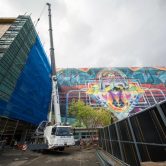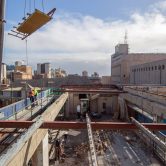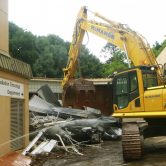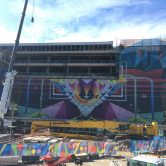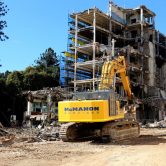Project Overview
Renewal SA is a State Government authority responsible for planning, managing and facilitating the delivery of strategic residential, mixed use and industrial development projects across South Australia.
The redevelopment of Lot Fourteen, the former Royal Adelaide Hospital site, as Australia’s first creation and innovation neighbourhood, is a major economic development opportunity for South Australia. The first stage of this redevelopment is the demolition and remediation work for the Cobalt, Hone Wing and East Wing buildings, as well as the former Emergency Carpark on North Terrace. Renewal SA engaged McMahon Services to undertake these works based on our past track record in similar projects, and on the breadth and depth of our systems, people, plant and equipment.
Scope of Work
Demolition and remediation works included:
- 6m high Cobalt Wing,
- 9m high Hone Wing, and
- 28m high East Wing.
All medical, chemical and other hazardous materials associated with hospital were removed and relocated to the new Royal Adelaide Hospital prior to works commencing. Early works included erecting hoarding and isolating and decommissioning services including electrical, communications, water, medical gases and wet and dry fire systems.
Hazardous materials removal and remediation included bonded and friable asbestos. Works were performed by encapsulating work zones and the use of negative air pressure containment.
McMahon Services utilised its high-pressure Hammelmann Pump to produce 140MPa pressure at 70L/m using a Conjet Nalta 101 attachment to create sufficient pressure to hydro-demolish asbestos containing fire-rated materials coating steel beams within sealed sections of the buildings. The Hammelmann Pump demonstrated that it could completely strip away asbestos containing coatings at the rate of ten labourers or more, creating a perfectly cleaned metal surface. All asbestos materials were treated under normal friable asbestos conditions.
Over 2,579 drums of predominately friable asbestos contaminated materials totalling approximately 298t were sealed and removed from site. Asbestos was discovered in many unexpected locations and was 50% greater than first expected. The project team took on the risk of remediating all discovered asbestos and despite the additional works required, kept the project to program. Asbestos containing drums were taken to EPA licenced receiving stations for disposal. Mercury from fire detectors, thermometers and fluorescent lighting was also removed from site and recycled into new products.
Other works included the installation of reinforced blockwork infill walls in supply tunnels, link corridors and services tunnels to other operational buildings within the hospital precinct. Mechanical demolition was undertaken by deconstruction excavators with high reach booms and a variety of attachments including shears, hammers and grabs.
Detailed 3D demolition staging plans were developed for the project in conjunction with our design partner Wallbridge Gilbert Aztec. Total volumes of demolished materials recycled offsite included 6000t of bricks and concrete and 1747t of steel, of which at least 95% was recycled into new products through our sister company ResourceCo.
Civil reinstatement works occurred toward the end of the project and included reconnection of sewer pipes, backing and compacting earthworks, paving footpaths, and capping and sealing stormwater infrastructure.
Plant and equipment utilised on the tightly constrained site included PC1250, PC850 and PC450 demolition excavators, a PC320 excavator, skid steers, 25t Franna crane, 100t boom crane and a dust suppression system that hooks directly into the local water mains network reducing the need for water trucks which would otherwise congest the worksite unnecessarily. The PC1250 demolished structures at a rate of 200t per day and the PC850 at 50t per day.
Workforce peaked at 80 personnel achieving 89,860 workhours over the life of the project.
Stringent environmental and noise controls, community and stakeholder engagement, and traffic management strategies were implemented for the project due to the site’s close vicinity of commercial, Government and residential properties, as well as the Adelaide Botanic Gardens only a matter of metres from the main demolition works. Significant effort was expended in minimising the impact of our operations for site tenants, local stakeholders and members of the public.
Community and Stakeholder Engagement
The project delivery team included dedicated community and stakeholder specialists to work closely with Renewal SA, ensuring all parties affected by the works received regular and appropriate communications. Such communications included a project website, a 1300 number, an email address, fact sheets and timelines for the works, as well as regular and an-needed updates and activity notifications. The project team regularly provided Renewal SA with advice noting any upcoming demolition, asbestos removals or other works that had the potential to impact stakeholders.
The project team supported various Renewal SA public engagement projects, including a major community open day in July 2018, with McMahon Services providing a 25t excavator and 3t bobcat for attendees to climb on board and have their photo taken. McMahon Services also assisted in establishing a viewing platform on site to enable the general public to watch the demolition and redevelopment works in progress at set viewing times.

